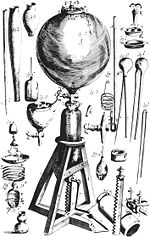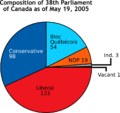Francis Hauksbee the Elder FRS (1660–1713), also known as Francis Hawksbee, was an 18th-century English scientist best known for his work on electricity... 13 KB (1,408 words) - 19:58, 28 April 2024 |
Francis Hauksbee the Younger (1687 – 11 January 1763) was an English instrument maker and experimentalist. He was son of John Hauksbee, who belonged to... 3 KB (357 words) - 11:33, 16 June 2023 |
Hauksbee may refer to: Francis Hauksbee (scientist), 1666–1713. Mrs. Hauksbee, a fictional character in many stories by Rudyard Kipling This disambiguation... 177 bytes (51 words) - 10:19, 16 October 2020 |
 | Others (e.g., Isaac Vossius, Giovanni Alfonso Borelli, Louis Carré, Francis Hauksbee, Josia Weitbrecht) thought that the particles of liquid were attracted... 36 KB (4,225 words) - 17:58, 12 May 2024 |
respiratory physiology, though the latter use is often erroneous. Francis Hauksbee performed some of the earliest observations and experiments in 1709... 16 KB (2,053 words) - 15:39, 27 April 2024 |
 | instance, shown in the Figure is an electrostatic generator built by Francis Hauksbee the Younger. Another key development was in the 1730s when C.F. du... 87 KB (9,341 words) - 21:34, 12 May 2024 |




